Estimated reading time: 14 minutes
There is an opportunity to import toys from China. However, there are always several challenges to consider.
You will need to select the right suppliers or distributors, and you may encounter issues such as import fees.
This guide provides a comprehensive overview of how to source toys from China and makes it easier for you to make a decision.
Before starting, let’s check out my other articles on “The Best Toy Manufacturers in China” and “Importing Children’s Products from China” for more valuable insights and details.
What Should I Pay Attention to When Importing Toys from China?
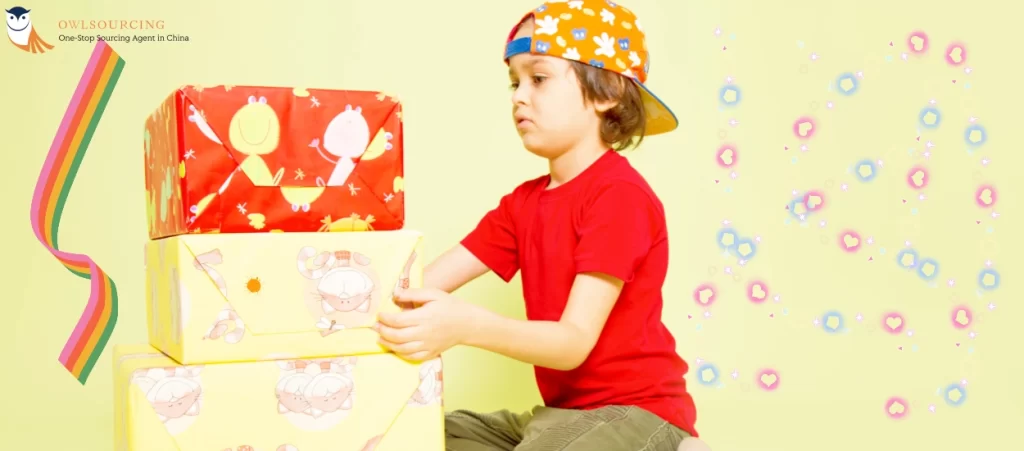
1. Regulatory Measures and Compliance of Toys Being Imported
A: International Standards: Toys imported from China must meet the safety standards that apply to all the target markets. For example:
- U.S. Market: Says it has to meet the requirements of “ASTM F963” and “CPSIA” concerning lead content, small parts, and phthalate content of phthalates.
- European Union: Must be produced under the safety and quality of “EN71” for parts B, F, and G standards related to the presence of heavy metals, electrical safety, and flammable materials, respectively.
- Other Markets: Every nation has its own standards (as Japan has its ST Standards). The information obtained will ensure compliance for each market before import.
B: Certificates and Testing: Get Attestation from certain recognised organisations, such as:
- CE Certification (required in Europe)
- CPSIA Compliance (for the U.S.)
- CCC Certification (for China)
C: Material and Quality Assurance:
- Avoid hazardous chemicals in materials like plastics and paints, ensuring they meet toy safety guidelines.
- Use “phthalate-free plastics” for toys and “lead-free paint” for all surfaces, tested by a certified lab.
2. Special Features – Product for Specific Age and Clear Labelling
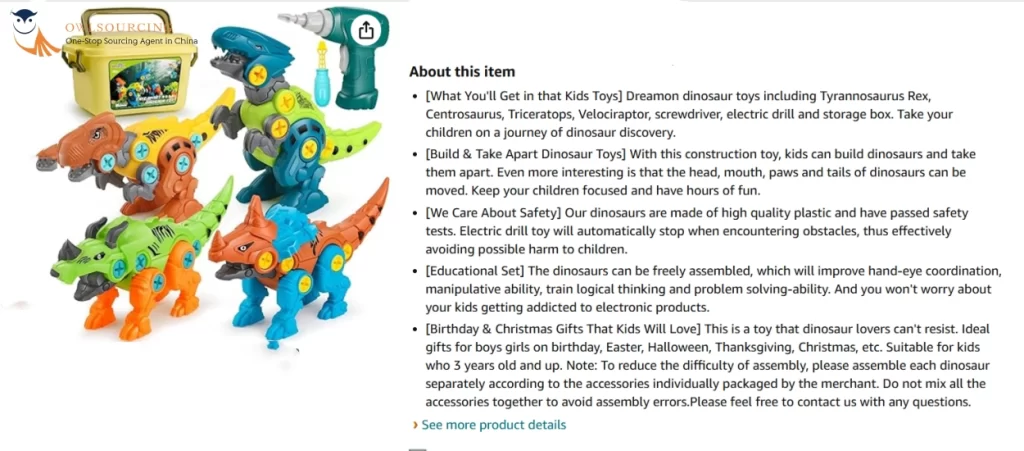
Age Warnings and Labels: Every toy should have precautions and instructions like the following: ‘Not suitable for children under 3 years’. This also alerts the caregivers to any hazards that are in the home, and also makes them aware of the state laws.
Expert Tip: Be careful with toys for kids under 3 years: From 0 – 3 years, kids like to explore around them using their mouth, so some toys with little pieces are not a good option since they pose a choking risk.
Example: “A toy manufacturer also printed English, French, and German age-related labels and warnings for an EU shipment and thus was able to prevent multilingual labelling and relabeling costs on EU customs.”
3. Customs and Documentation
Provide documents of invoices, packing lists, certificates, and test reports.
4. IP Protection (Patents, Trademarks, and Copyrights)
Counterfeit Prevention: Counterfeiting policies exist in the Chinese market; hence, it is ensured that goods do not infringe IP.
While designing product logos, clothing, or any part of your products, avoid copying famous brands without authorisation because you will be exposed to the risk of being sued or bringing in prohibited items.
Register Your IP: If you have proprietary or branded toys, consider registering your trademark and patent in China to prevent unauthorised copying. Any toy can be proprietary or branded, so it is advisable to register trademarks and patents in China.
What are the Types of Toys, and How Expensive Are They in China?
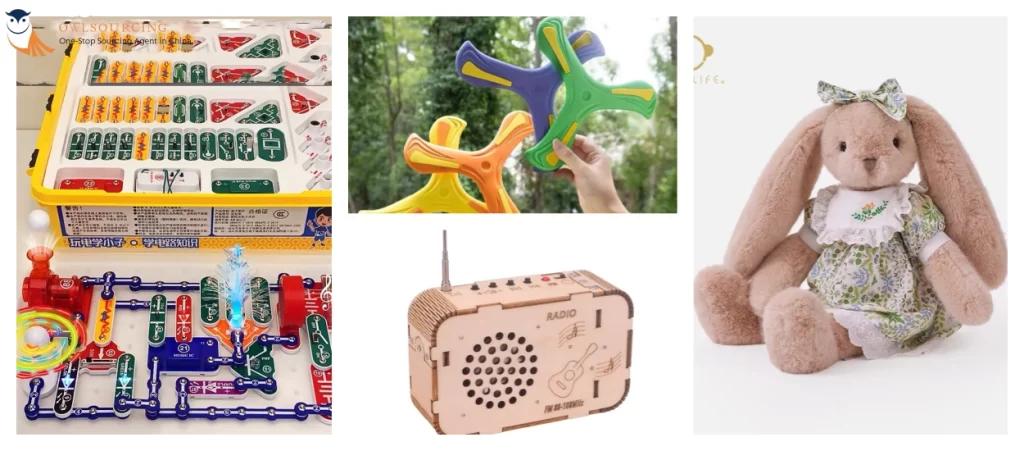
Not all toys either turn out to be extremely profitable ones or best-selling toys. With an idea of what products get sold most frequently and what is trendy these days, it is possible to make judgments on where to spend and where not to lose money.
Due to technology advancement and the use of the web marketplace, private-label toys have been easy to market through platforms such as Amazon, eBay, and Shopify since they give useful information on the purchaser to the retailer regarding how to manage inventory better.
Below is a summary of China’s economic toy categories and their estimated prices:
1. Educational Toys (Magnetic building sets, Montessori learning toys, and materials in the form of interactive flashcards)
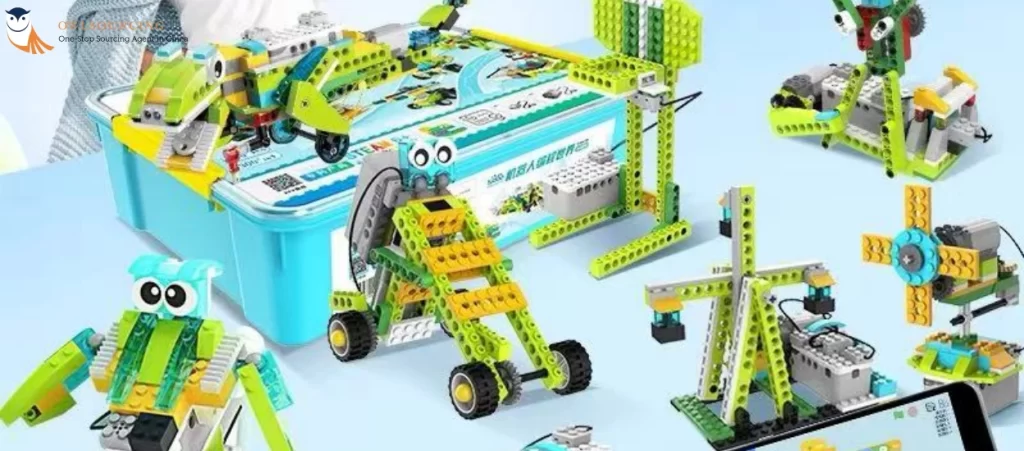
As developmental toys intended to enhance academic performance and problem-solving skills in children, toys that can be used without a screen are some of the most sought-after by parents.
Average Price:
- Basic wooden puzzles: $0.50 per unit.
- Advanced STEM kits: A range of $2-$5 for a piece, depending on the materials and technology involved.
2. Electronic Toys (Toy cars that can be controlled with a remote control, robots that speak, animal-shaped toys that can dance)
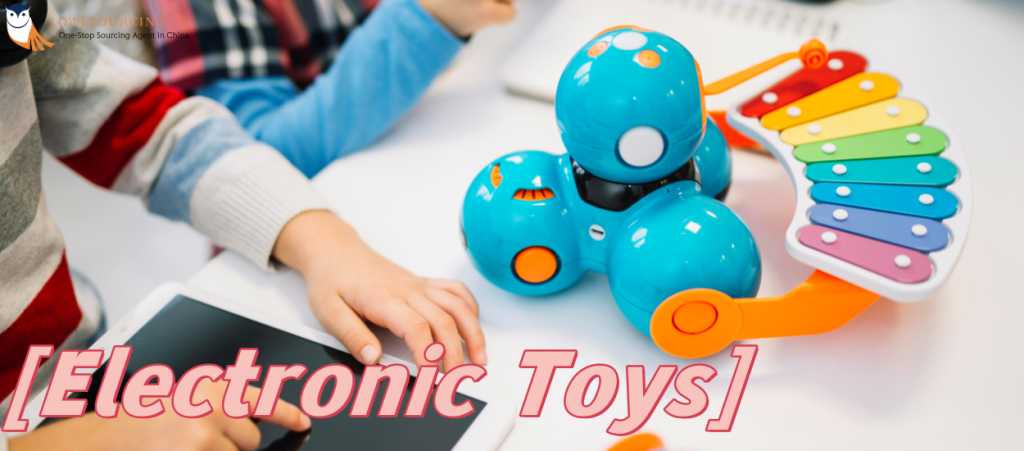
Remote-controlled vehicles and toys, including automobiles, boats, aeroplanes, helicopters, and robots, commonly have lights, sound or can move.
Average Price:
- Simple battery-operated toys: $1-$3 per unit.
- Advanced RC cars or robots: $5-$20+ per unit.
3. Plush and Soft Toys
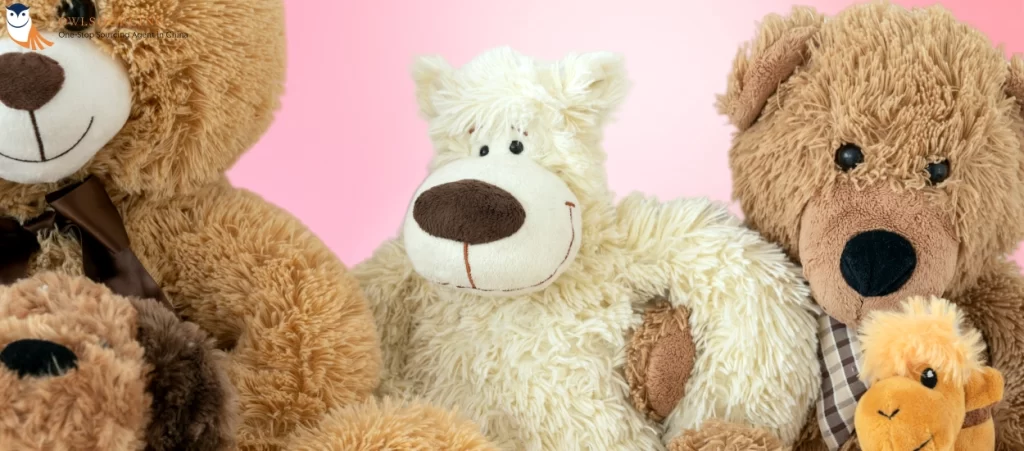
Soft toys are suitable for kids, animated characters, dinosaur lovers, as well as a collection of prizes that bring people comfort.
Average Price:
- Small plush toys: $0.80-$2 per unit.
- Larger or branded plush dolls: $5-$10+ per unit.
4. Toys [Classic TV notable characters, Action Figures & Collectables]
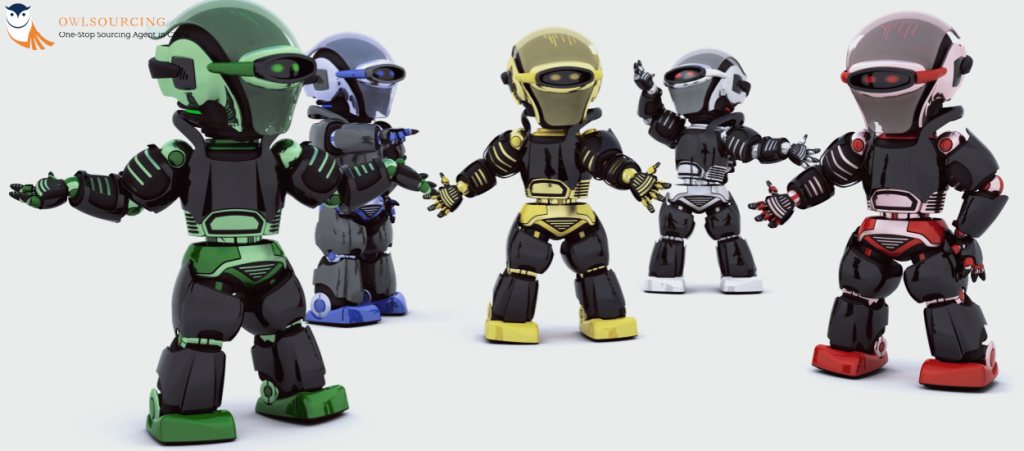
Favourite among children and collectors, these toys have photos from movies, cartoons, or video games.
Average Price:
- Small action figures: $0.50-$1 per unit.
- Branded or licensed collectables: $5-$15+ per unit.
5. Outdoor Toys
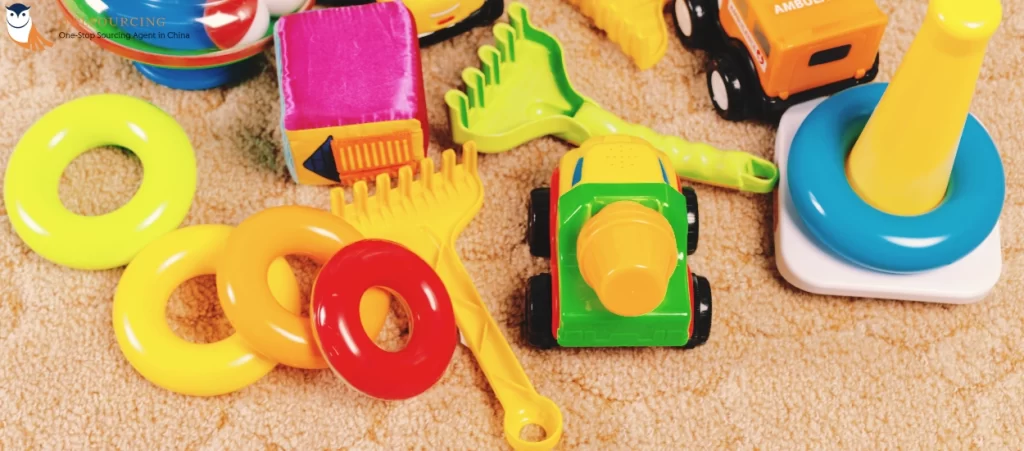
Little worlds of recreation, outdoor toys promote physical activity and can well be sold in season.
Average Price:
- Simple toys like kites: $0.50 per unit.
- Larger items like scooters or water slides: $3-$15+ per unit.
Popular Examples: Swings, toss balls, hula hoops, jump ropes, infant on Call, inflatable pools, and scooters for children.
6. Creative Toys – Arts and Crafts
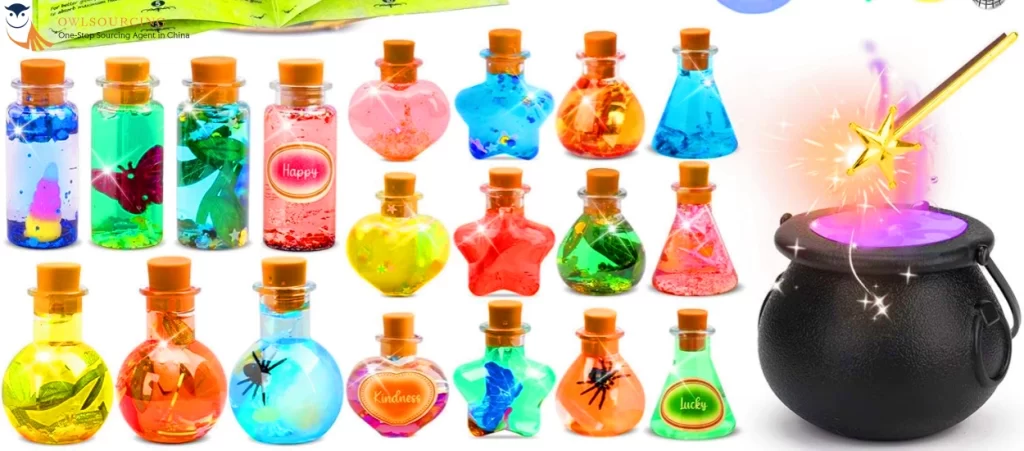
Cultivate imagination and uniqueness while frequently being advertised as not tech-oriented.
Average Price:
- Basic colouring kits: $0.20-$0.70 per unit.
- Complex craft sets: $1-$5 per unit.
Examples: Paint-by-number sets, bead art activity sets, and modelling clay.
7. Infant and Toddler Toys
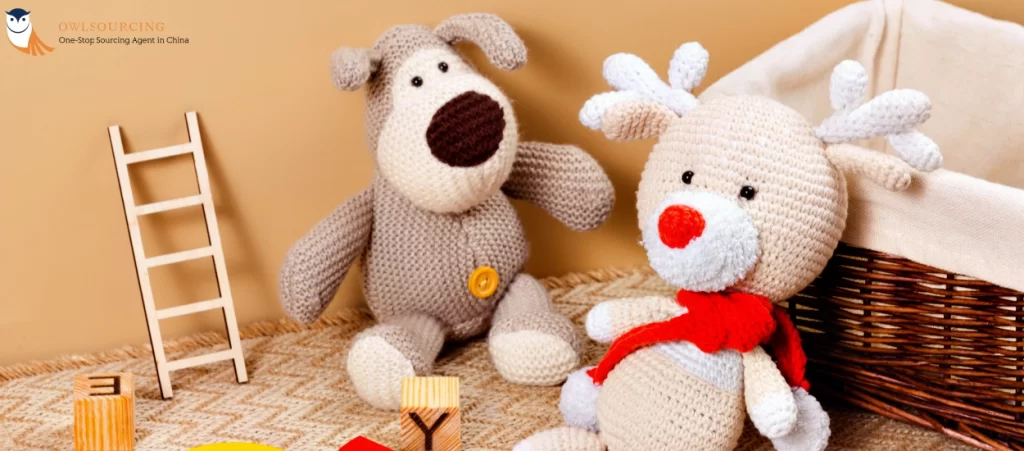
These toys are specially designed to stimulate the development of the five senses of the child and are actually very safe for the young child.
Average Price:
- Simple rattles: $0.20-$0.50 per unit.
- Complex activity sets: $1-$3+ per unit.
Popular Examples: soft blocks, teething rings, and free items such as toys for playing, sensory development kits.
How to Import Chinese Toys Without the Risk
Sites such as Alibaba offer thousands of options, but many toy importers encounter problems like imitation factories, inconsistent quality, and surprise costs.
Here at Owlsourcing, we specialise in toy sourcing, connecting enterprises with credible China toy manufacturing, and managing effective logistics.
✅ Factory-authenticated producers of plush toys, educational toys, electronic toys, and more
✅ We do it all—supplier inspections and sample approvals through production monitoring and shipping
✅ Honest pricing. No surprises. Ever.✅ Why Work with Owlsourcing?
We verify the factories; you won’t find fake listings or trading companies.We monitor every step, so your toys arrive on time, safely, and to your standards.
Our pricing is transparent, so you can understand what you’re truly getting.
👉 Import toys smart. Call Owlsourcing today.
How to Find Reliable Toy Suppliers and Manufacturers in China?
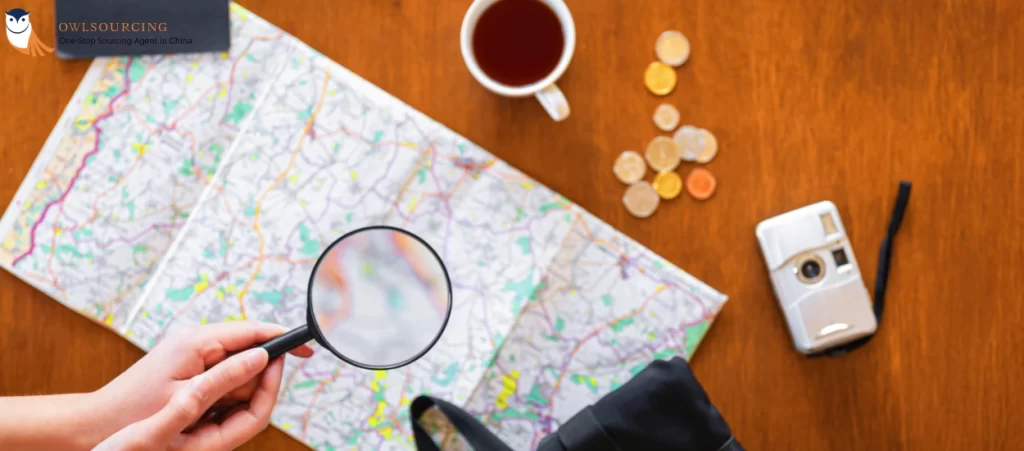
Reliable toy suppliers are the heart of any import business. Find reliable toy suppliers in China, and you will be able to set up everything required: superior quality, reasonable prices, and no headache-causing transactions. Here is how you can effectively go through this process:
1. Chinese Wholesale Websites: Your Online Gateway to Toy Suppliers
Chinese wholesale websites are, in a word, the best places to source toys because they exude convenience, variety, and accessibility all in one package. Here’s how you can make the most of these platforms:
|
Platform |
Minimum Order Quantity (MOQ) |
Delivery Time |
Customization Options |
Key Features |
|
Low to High (varies by supplier, typically 100+) |
Typically 15-60 days, depending on order size and supplier |
Extensive customisation available (OEM, ODM) |
Largest B2B platform with diverse suppliers; Ideal for bulk purchases and customised products |
|
|
Very Low (1+ units) |
7-30 days for smaller orders |
Limited customisation; generally pre-made products |
Best for small businesses and startups with limited budgets; No MOQ barriers |
|
|
Low (1-10 units, varies by supplier) |
10-30 days |
Limited to basic customisation options |
Great for niche markets and test orders; Flexible with smaller purchase quantities |
|
|
High (500-1,000+ units, varies by supplier) |
30-90 days, depending on order complexity |
Comprehensive customisation options (OEM, ODM) |
Best for bulk orders and fully customised products; Trusted by large-scale businesses |
|
|
Medium to High (100-500+ units) |
15-60 days |
Advanced customisation available (OEM, ODM) |
Stringent supplier verification; Suitable for high-quality sourcing and reliability assurance |
2. Trade Shows in China: Where Business Meets Opportunity
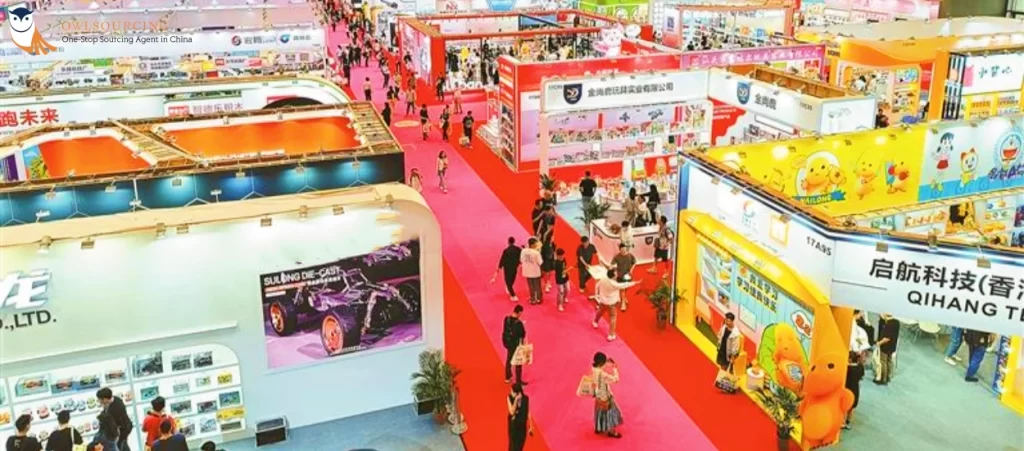
Trade fairs have been a game changer in sourcing toys, with direct contact with suppliers, product testing, and networking.
- Canton Fair: One of the oldest fairs, it has a wide variety of industries, from toys to other goods, under it.
- Global Sources Fair: Quality suppliers with product innovations.
- China Toy Expo: Only toys are showcased at this fair, so this is an essential visit for somebody looking for truly specialised knowledge.
- HKTDC – Toy and Games Fair: The fair is Asia‘s biggest of its type and is expecting more than 2,000 global exhibitors to showcase a comprehensive variety of products from traditional toys to high-tech games, from established names to new and emerging brands.
Expert Tip:
“Toy trade shows are wonderful, but success in the end relies on having the right factory and being confident of quality from prototype to end-of-run shipment.
- Is your middleman supplier a factory, or is it not?
- Will what you receive match what you okayed in the sample?
- Can they produce products to specifications for child safety on time?
That’s where Owlsourcing gives your competitive advantage.
✅ We Manage the Entire Sourcing Process
We don’t just connect you, we personally visit factories, handle sample verification, monitor production, and manage quality control and export logistics.Having an on-the-ground team in China and established supplier relationships, we protect your investment every step of the way.
With decades of experience in international trade business, OwlSourcing has helped thousands of businesses navigate the complexities of importing toys, including safety regulation compliance, competitive pricing, and reliable suppliers.
✅ Need to source reliable toy makers in China? Allow Owlsourcing to guide the way. contact us now“
KY, Lead Sourcing Manager at OwlSourcing.
Top Chinese Cities for Sourcing and Importing Toys
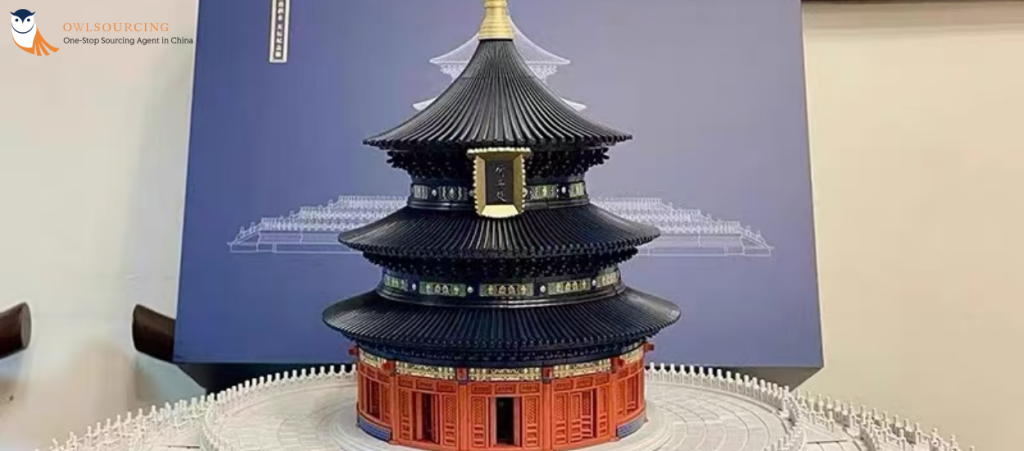
Now, let’s take a closer look at the Chinese cities most involved in toy production, including their peculiarities.
1. Yiwu Market – Wholesale Toys
Address: No. 158, Binwang Road, Yiwu City, Zhejiang Province, China
Yiwu Market is the largest wholesale market for small commodities in China, attracting numerous suppliers from all over the country. The range of goods is huge, and the main businesses in Yiwu include toys.
Toy categories in Yiwu include wooden toys, plastic toys, plush toys, electronic toys, and remote-control toys.
Advantages:
- Low-Quantity Purchase: Best suited for small businesses or startups because of the support it gives to low MOQs.
- Affordable Price: Economical solutions on offer for budget-conscious buyers.
Disadvantages:
- Lower Quality of Product: Some products cannot meet the required standards in safety and durability in high-regulation markets such as the U.S. or Europe.
- Low customisation: Most sell locally designed toys with little room for buyers to get their needs catered for.
2. Yunhe – Wooden Toys
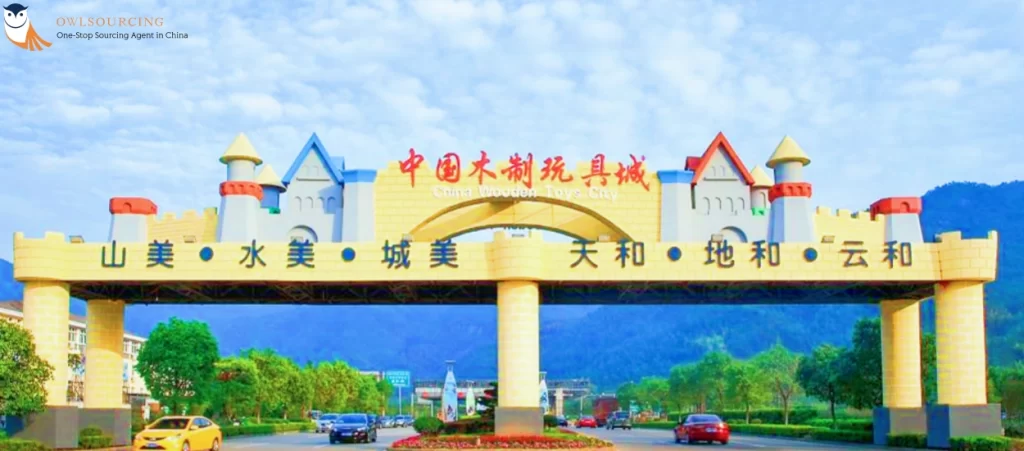
Yunhe is the largest wooden toy hub in China, which annually supplies about 10 billion Chinese yuan worth of products. It is among those places to be visited if a person intends to obtain quality and environment-friendly toys.
Advantages:
- Customizable Products: The manufacturer can be consulted on ways of designing the product to meet the particular needs of a specific buyer.
- A mature industry chain.
- Eco-Friendly: Most Yunhe factories are concerned about environmental issues and therefore produce toys whose wood material is sourced responsibly.
Disadvantages:
- Minimal Order Quantities: Might deter small-scale buyers.
- Dependence on Imported Materials: Most raw materials, like beechwood and pine, are imported; this might affect the market prices.
3. Shantou – Plastic Toys (Mid to Low-End)
Shantou is the biggest hub for plastic toy production and has 49,000-plus registered toy manufacturers as of 2022. The brand caters to the mid to low-end market.
- Great value for money: Extremely competitive quotations compared to the price being offered, also the industry chain is developed.
- Multiple manufacturing procedures: Injection, blow, and rotational moulding.
- So many toy showrooms.
Disadvantages:
- Less Innovation: The manufacturers do less development.
- Simple Product Design: Less complexity in the design of products as compared to other markets.
4. Dongguan – Electric & Plastic Toys (Middle to High-End)
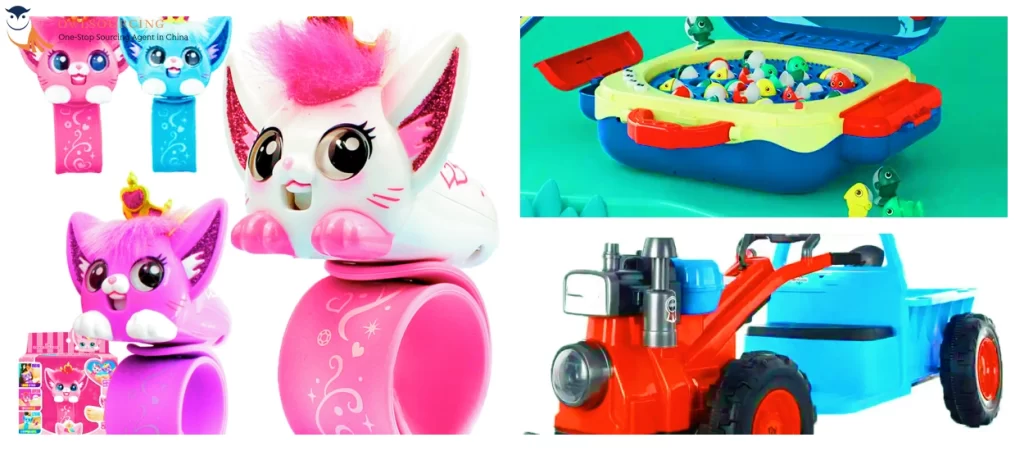
Being from the “world’s factory” to a powerful manufacturer of mid-to-high-end toys, especially high-tech and advanced plastic toys.
Advantages:
- Advanced Production process for high-quality products;
- Support fashionable and exquisite design;
- Range Diverse: Electronic toys and high-quality plastic toys.
Disadvantages:
- More Expensive Products: These are manufactured using better technology and quality control.
5. Yangzhou – Stuffed Toys
Yangzhou is the biggest production base for stuffed toys in China, producing items in this category that are highly cost-effective and of high quality.
Advantages:
- Original Designs: Dedicated to designing original animal prototypes and customised plush characters.
- High Output: The plush toys market in 2022 stood at 330 billion yuan; this shows it leads globally.
Disadvantages:
- Product Homogeneity: High similarity among designs, little differentiation.
- Lack of Branding: High global brands are scarce for local manufacturers.
How to Ensure Toy Quality and Safety Standards Compliance?
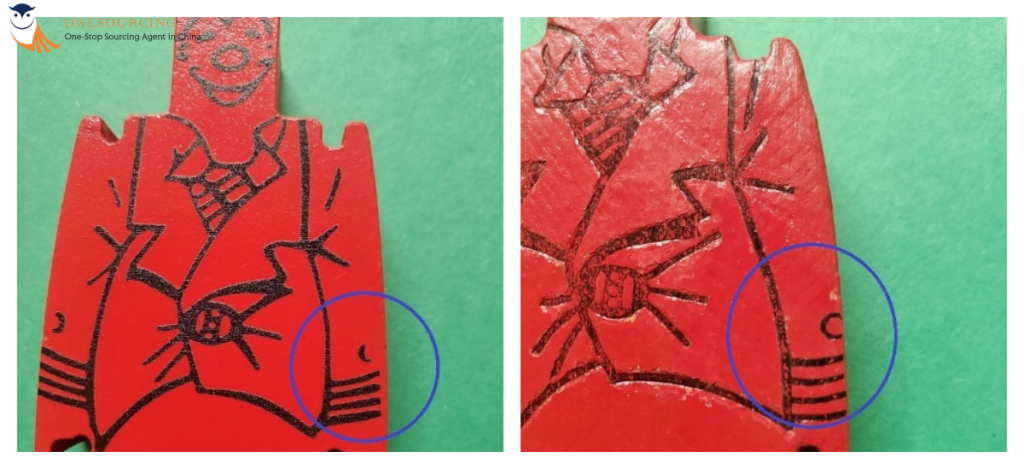
Toy importers must guarantee toy quality and their adherence to various safety requirements, especially where the toy business is pretty competitive and repeatedly monitored, as in the case of the United States, Europe, and Australia.
Penalties may include fines, recall, and worst of all, suffering great harm to your corporate image is not a joke. Here’s a comprehensive guide:
1. It is important to have an understanding of both the International and Local Toy Safety Standards.
- United States: Under the Consumer Product Safety Improvement Act (CPSIA), toys are required to meet the standards of ASTM F963. The most important provisions include restrictions on lead and phthalates, the requirement for flammability of materials used in some children’s products, and the prohibition on small parts in personal gear.
- Europe: EN71 standard must be followed strictly. It contains provisions on chemical safety, mechanical features, flammability, and marking on toys.
- Australia: The Australian/New Zealand Standard AS/NZS ISO 8124 is adopted, which corresponds to the international standards for toys.
2. Choose to partner with certified Suppliers
It is also important to negotiate with suppliers who have good compliance records. Request documentation, including:
- CE Certification (for Europe).
- CPSIA testing reports (for the United States).
- The CCC Certification (concerning China markets).
Tip: Qualifications & Testing is important to know what kind of customers the supplier is working with, as it helps to know their capabilities and experience. And don’t forget to ask for the available testing reports, for some of the professional suppliers, they renew the report annually, you don’t have to do a re-test if the existing report meets the request.
3. Carry out pre-shipping quality assurance inspection
Check raw materials for compliance with safety requirements before incorporating them. For instance:
- Avoid the use of plastics containing phthalates and paints that have lead in them.
- Ensure that fabrics used in making plush toys are not toxic and do not have any characteristics of a choking hazard.
4. Test Finished Products
- Chemical Safety: Confirm that no material has lead, cadmium, formaldehyde, or any other toxic material in it.
- Small Parts Testing: Ensure that toys in Category B, Specifically Toys for Children Below the Age of three, do not have any detachable small parts.
- Flammability: Evaluate fabrics and plastics to verify compliance with sets of flammability resistance standards.
What is The Import Duty On Toys from China?
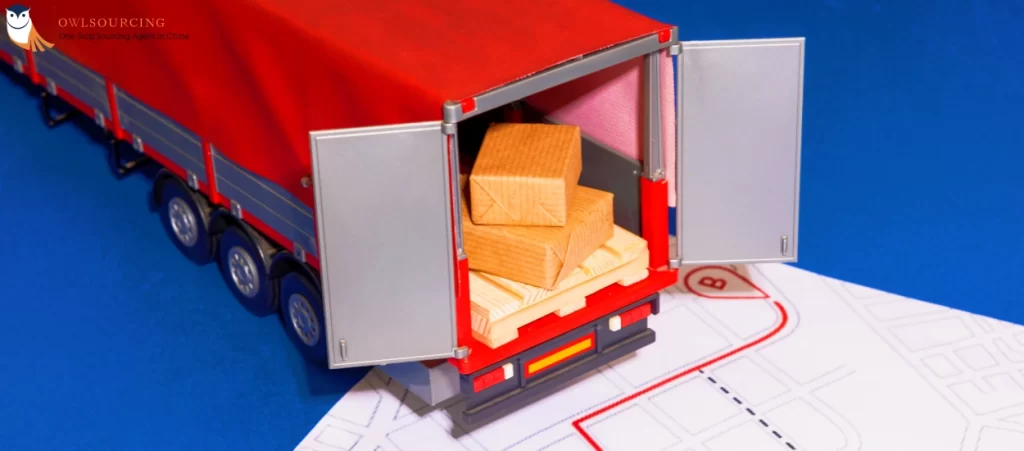
In the USA, most toys fall under the Harmonised Tariff Schedule number 9503.00.00. Toys, as a rule, have a duty-free rate of 0%. But there are still other costs to consider:
a) Merchandise Processing Fee (MPF)
What it is: A payment charged to most imported goods as a means of recovering costs incurred on customs services.
How it’s calculated:
For goods valued under $2,500: Flat fees vary from $2 to $9 for every shipment.
For goods valued over $2,500: This costs 0.3464%, with a basic rate of $27.75 and a max rate of $575.
b) Harbour Maintenance Fee (HMF)
What it is: A charge levied on imported goods that come through sea transport, a way used to fund the functioning of ports in the United States.
Rate: 0.125% of the shipment’s value.
Example: “For instance, if the toys on board had a value of $10,000, the calculated MPF would be $34.64 and the HMF $12.50.”
c) Possible Consequences of Trade Policies
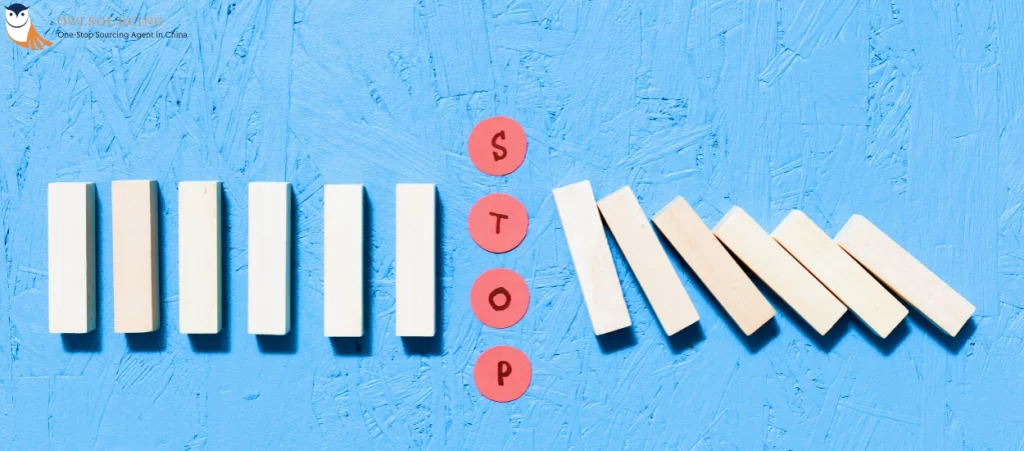
For example, recent debates concern rate adjustments on different imports from China that might affect toy production.
Note: Do I have to pay an import tax on goods from China?
According to the US Customs, the de minimis rule allows imports with a total goods value of not more than $800 to enter duty-free.
But this exemption does not apply to:
Special or restricted goods like beer or cigarettes.
Products that a seller splits into smaller lots with the intent of sending them in many packages, each of which costs not exceeding $800, as this may raise red flags with customs.
In case the value of the consignment sent is over $800, the recipient is required to pay the import duty that is dependent on the classification of the goods in the HTS (Harmonised Tariff Schedule).
For instance, the toys that fall under HS Code 9503.00.00 have a 0% duty rate, while other categories, such as the ones falling under HS Code 5005.90.20 or 1500.11.00, may attract a rate between 5% and 15%.
Read More:
Final Thoughts
China is one of the world’s main toy producers, with over 85% of the world’s total toy production. The country is an ideal sourcing destination due to its large manufacturing scale, competitive pricing, and attractive business-planning services in the field of toy manufacturing.
But it won’t be enough to find suppliers to succeed in this sector. Strategic planning, proactive problem-solving, and compliance with international safety and legal standards are involved.
This guide, with the help of OwlSourcing, will give you advice on navigating the toy import process and making a successful business.
FAQs
1. What Are the Best Packaging and Shipping Options For Toys from China?
When it comes to toys from China, the best packaging is in durable cardboard boxes with bubble wrap and clear labelling.
Air freight is best for urgent and lightweight items for shipping, while sea freight is a better choice for large or bulky shipments in cost-efficient terms.
2. How Long Does It Take to Import Toys from China?
It typically takes 30-90 days to import toys from China, depending on the following factors:
- Production Time: Depending on the order complexity, and in the case of factories, it may take 15 to 30 days.
- Quality Checks: Inspections and testing will take 1 to 5 days.
- Shipping Time: As a result, sea freight can take up to 20-45 days to reach the destination.
Note: You might see delays during peak seasons and times, or due to unforeseen logistical challenges.
3. Do I Need a License to Import Toys from China?
As a rule of thumb, you don’t need a special license to import toys from China, though, as always, you need to make sure that toys comply with the safety standards and regulations of the end destination country, such as the CPSIA in the U.S. or EN71 in the EU.
4. How Can I Verify the Quality of Toys Before Shipping?
By working with OwlSourcing, you can verify the quality of toys before shipping. It includes quality control, factory audits, and sample testing, all for complying with safety and quality standards.
5. When Importing Toys, what certifications should I be looking for?
While importing toys, check if the toys come with certifications like CE (Europe), ASTM F963 (U.S.), and ST Standards (Japan) to know they are in accordance with regional safety standards.
6. What do I do with Returns or Defective Products from China?
To handle returns or defective products from China, establish clear agreements with suppliers in advance, including detailed return policies. Work with suppliers to negotiate replacements or refunds and inspect goods thoroughly before shipping to minimise defects.

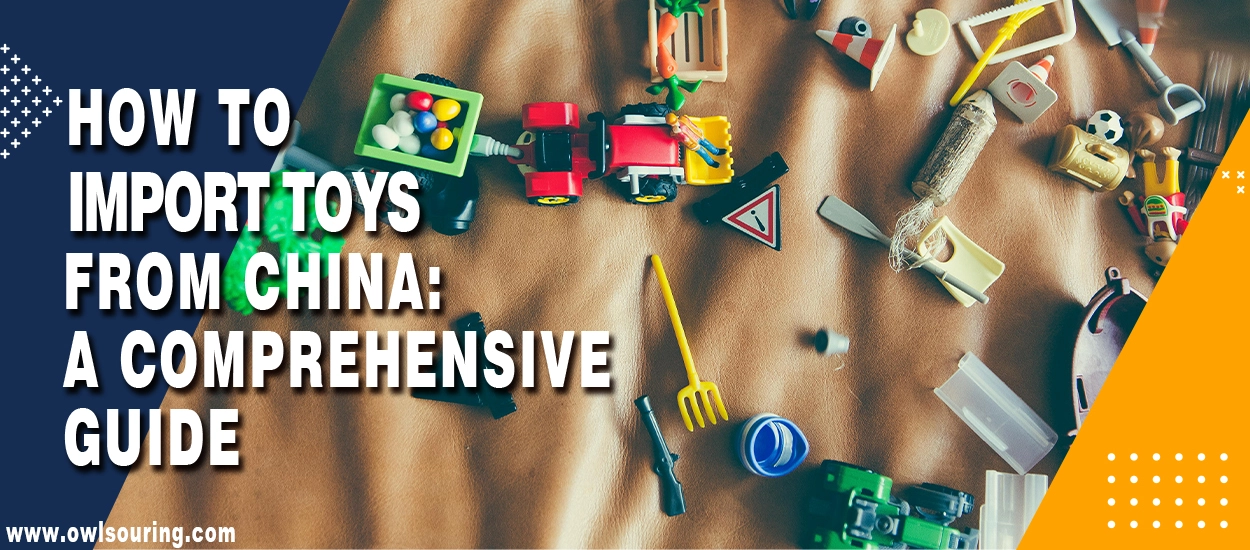

4 thoughts on “How to Import Toys from China: Guide 2025”
Hi there,
Fantastic article – thanks for the valuable information! I’m currently exploring opportunities to import toys from China. Could you share some recommendations or insights on reliable suppliers specializing in quality toys, especially those open to custom designs? I’m eager to learn more about the process and any key considerations in this specific industry.
Hey thoma,
Thank you for the kind words! For importing toys from China, it’s crucial to find suppliers who specialize in quality products and can handle custom designs. I recommend starting your search on B2B platforms like Alibaba, Global Sources, or Made-in-China.com. Look for suppliers with high ratings and positive feedback, and check their ability to customize toys. Consider the safety standards required for toys in your market, like EN71 or ASTM. Visiting trade shows such as the China Toy Expo can also provide direct contact with manufacturers. Always ensure rigorous quality checks and clear communication about your specifications.
Hope this helps you get started!
Importing toys from China seems like a fascinating process. I appreciate the clear steps and insights provided. However, I would love to know more about potential challenges and how to overcome them. Looking forward to more informative content like this!
Hi MasterB! Thank you for your feedback!
Importing toys from China can indeed face challenges such as quality control, navigating regulatory standards, and managing shipping logistics.
To overcome these, establish strong relationships with reputable manufacturers, ensure thorough product testing, and stay updated with import regulations.
Consider also partnering with experienced importers or hiring a consultant.
Looking forward to sharing more insights and tips on this topic!